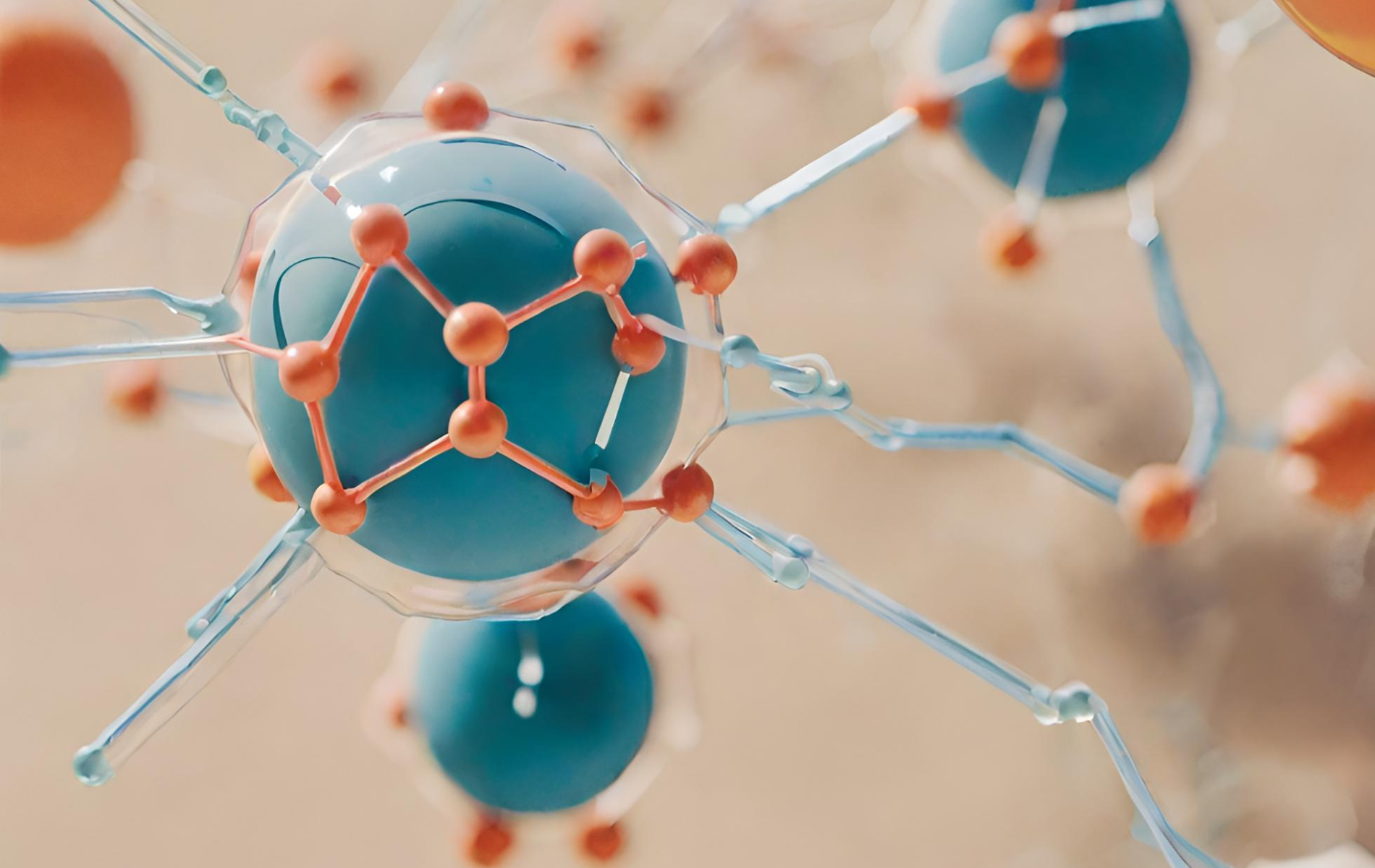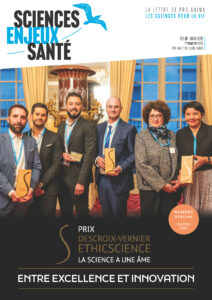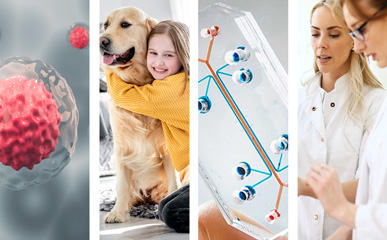
Shaping the future of drug discovery with 3D cell models, NAMs : “Not a matter of if but of when”, Closing the Translational Gap in Cancer Drug Discovery
News on non-animal methods
APRIL 15-19, 2024NEWS, REPORTS & POSITION STATEMENTS
1. How 3D cell models will shape the future of drug discovery
Replacing 2D cell models with self-organising 3D models can circumvent the risk of clinical failure and avoid potential delays or termination of drug development projects. However, it is not a simple process, and it introduces as many challenges as it does additional benefits. Drug Target Review discusses this with Kenneth Pryde, Deputy Director of Oncology Science and Safety at AstraZeneca, Florian Fuchs, Chief Technology Officer at HeartBeat.bio, and Shan Dhamija, Vice President of Strategy and Innovation at Molecular Devices.
“In fact, animal models may not even be useful for testing biological agents, such as vaccines to detect antibodies that are so humanised that they are weakly immunogenic in animal models. So it doesn’t make sense for us to use animals knowing that we’re not observing the impact of the treatment.”, Dr Fuchs says.
Read (FR) and watch the discussion
2. Cruelty Free International to shape the EMA’s 2024 workplan goals
As stakeholders at the EMA’s 3Rs Working Party, Cruelty Free International (CFI) advises the European Medicine Agency (EMA) on the use of animals in regulatory testing. Kate Shipton, CFI Senior Science Advisor, delivered last month a presentation at the group’s second stakeholder meeting, reflecting on the Agency’s 2024 plans.
“The opportunity to collaborate with the EMA at this level is incredibly valuable, and being able to make a presentation to them is a privilege. It gives us a fantastic platform to promote the use of non-animal methods in regulatory drug testing and to encourage a transition away from testing on animals. We fully support the 3RsWP’s plans for the coming year, and are delighted that they include many of the suggestions that contributed” emphasized the Senior Advisor.
3. EPAA Designathon March 2024 flash report
On 20 — 22 March 2024, 44 scientists met at the European Commission’s Joint Research Centre (JRC) in Ispra, Italy for the first workshop to discuss the solutions submitted for the EPAA Designathon.
EPAA, JRC colleagues, and the participants who submitted solutions to the Designathon challenge, focused on discussions, collaborations and co-creation. A webinar is planned for the beginning of May (day and time TBC) to report on the outcome of this Designathon and its next steps. A flash report was produced and is available to read.
Watch the recorded opening session of this Designathon
4. Transitioning biomedical research towards human-centric methodologies : systems-based strategies
Human-centric approaches such as microphysiological systems and in silico methods have shown great promise in developing our understanding of human biology and disease, but can the use of these novel methods be wholly embraced within a prevailing research paradigm that has been both built upon and dominated by animal models ?
The NGO Biomed21 recently published an article exploring how a systems thinking approach, endorsed by the OECD and the EU, may prove to be a powerful tool for transformative policy change that encourages and facilitates the adoption of new approaches.
5. Landscape in the Netherland : NAMs for the safety assessment of pharmaceutical products
On 25 March, the Dutch National Institute for Public Health and the Environment (RIVM) published a report entitled the Landscape NAMs on safety assessment of pharmaceutical products.
Last week, Dr Victoria de Leeuw, a scientist at the RIVM Centre for Health Protection who study the transition towards animal-free innovations in the toxicology domain, shared more about her views : “Implementing NAMs is a very complex process involving many stakeholders in different international contexts. Before this Landscape, there was no overview of which steps one should take in the current system to take a NAM from research and development all the way to regulatory acceptance. I really enjoy piecing this puzzle together with experts in the field, which is a tough process that involves asking many questions. Everyone has a piece of the puzzle, and with the Landscape we hope the puzzle becomes more complete for every professional involved in the knowledge chain of NAMs and safety assessment of medicine.”
INTERVIEWS, NOMINATIONS & AWARDS
6. NAMs : “Not a matter of if but of when”
“It is not a matter of if but of when” – This is what Dr Susy Brescia, Regulatory Toxicologist at the UK Health and Safety Executive, has to say when asked about the future of NAMs in regulatory testing. Whilst experts agree it may be some time before the use of animals for regulatory decision-making can be completely replaced, Susy goes on to say that “with further scientific and technology development, policy change and smarter validation, NAMs will gradually replace animal testing”.
Hear from the NC3Rs NAMs Advisory Group as they discuss their recent paper on how to overcome the hurdles to embedding new approach methodologies (NAMs) in chemical and drug safety assessment.
TOOLS, PLATFORMS, CALLS
7. Vodcast : Dr Adriano Flora, The Jackson Laboratory
The latest sponsored DDW Sitting Down With vodcast features Dr Adriano Flora, Director of Business Development at The Jackson Laboratory (JAX). He discusses alternatives to non-human primates, the key benefits of this, and what impact they will have on the future of drug development. Moreover, he answers questions on the key breakthroughs in recent years in this field and how these have impacted future success, as well as challenges in the clinic that must be overcome to ensure this success is achieved.
8. Webinar replay : Applications of human intestinal organoid cultures in drug discovery
In this webinar, Dr. Victoria Conlin and Johnny Aether from STEMCELL Technologies describe, in detail, what intestinal organoids are, how they mimic the immunocytochemistry and morphology of the human gut epithelium, and how to use organoids for drug screening. They also discuss the intestinal organoid assays offered by Contract Assay Services (CAS) at STEMCELL Technologies.
9. Whitepaper : Closing the translational gap in cancer drug discovery with comprehensive tumor models
Cancer remains a formidable challenge worldwide, necessitating innovative solutions and the critical need for models that precisely mimic human responses, given the high failure rates in clinical trials. This whitepaper reveals how MIMETAS’s pioneering organ-on-a-chip technology and 3D tissue modelling expertise represent a significant advancement in closing the translational gap in cancer drug discovery.
MIMETAS’ cancer modelling capabilities are showcased through six case studies, highlighting our ability to model processes such as immune cell migration, CAR T cell efficacy, and the Tumor Microenvironment (TME)‘s complex interactions, all contributing to drug discovery progress.
INDUSTRY, BIOTECH & PARTNERSHIPS
10. A closer look at Elsevier’s AI strategy in drug discovery
In March 2024, Elsevier and Iktos announced a collaboration focused on enhancing drug discovery processes. This partnership integrates Elsevier’s Reaxys database, a leading source of chemical substance and reaction data, with Iktos’s AI technology, specifically its platforms Makya™ for generative drug design and Spaya™ for retrosynthesis.
In this interview with Mirit Eldor, Managing Director of Life Sciences Solutions, at Elsevier, they delved into the nuances of the partnership between Elsevier and Iktos.
SCIENTIFIC DISCOVERIES & PROTOCOLS
11. Heart-on-a-chip model used to glean insights into COVID-19-induced heart inflammation
Data from the U.S. Centers for Disease Control and Prevention shows patients hospitalized with COVID-19 between March 2020 and January 2021 had 15 times higher risk for developing myocarditis, or inflammation of the heart muscle, compared to patients without COVID-19. But the biology behind the association between SARS-CoV‑2 infection and heart inflammation has remained unclear – in part because there have not been good models with which to study infection-related heart inflammation.
Researchers at the University of Toronto and its partner hospitals have created a unique heart-on-a-chip model that is helping untangle the causes of COVID-19-induced heart inflammation and uncover strategies to reduce its impact.
Read the article in Science Advances
12. Gut microbe eats cholesterol for dinner
High cholesterol is one of the most significant risk factors for cardiovascular disease (CVD), a leading cause of death globally. Researchers from the Broad Institute of MIT and Harvard along with Massachusetts General Hospital (all MA, USA) have discovered that a species of bacteria, found in some people’s gut microbiome, can break down cholesterol, lowering cholesterol levels and the risk of CVD.
The team utilised shotgun metagenomic sequencing, which profiles all microbial DNA in a sample, combined with metabolomics, which measures the levels of known and unknown metabolites in a sample, to study stool samples from the Framingham Heart Study. The team utilized machine learning models to identify the enzymes responsible for the biochemical conversion and detected them, along with cholesterol breakdown products, in specific bacteria strains in the lab.
13. Meet the protein that drives nerve damage in traumatic brain injury
Researchers have uncovered the protein responsible for driving nerve damage following injury, revealing a potential treatment for traumatic brain injury (TBI). To understand what happens to brain cells upon impact, the team grew brain organoids, using induced pluripotent stem cells, and exposed them to mechanical injury via ultrasonic pulses, which mimics severe TBI.
By comparing organoids derived from individuals with or without genetic risk of developing neurodegenerative disease, the study revealed that those with a genetic predisposition were more susceptible to nerve death, indicating that some are more susceptible than others for developing diseases post trauma.
UPCOMING WEBINARS, WORKSHOPS, SYMPOSIA
- April 24 : Taking the leap towards microphysiological systems : Role of standards and funding — HSI India
- April 25 : Regulatory acceptance of NAMs — How to define criteria ? — Comité scientifique Pro Anima


